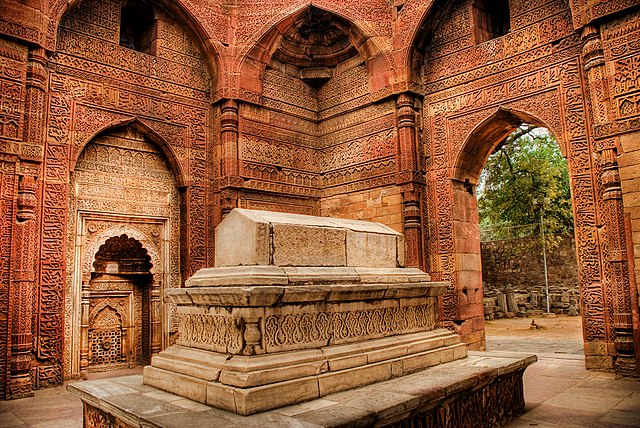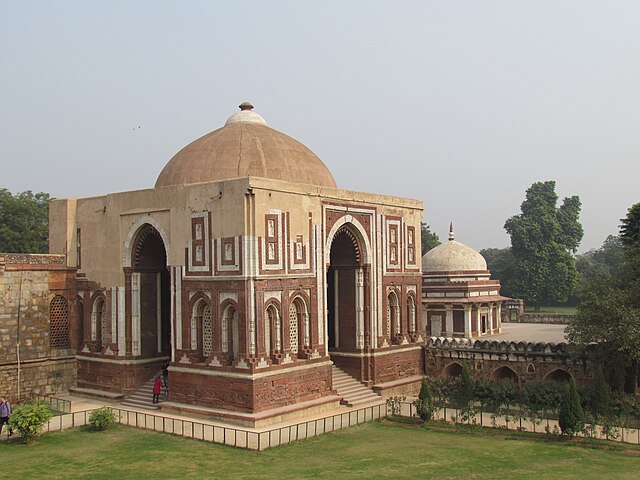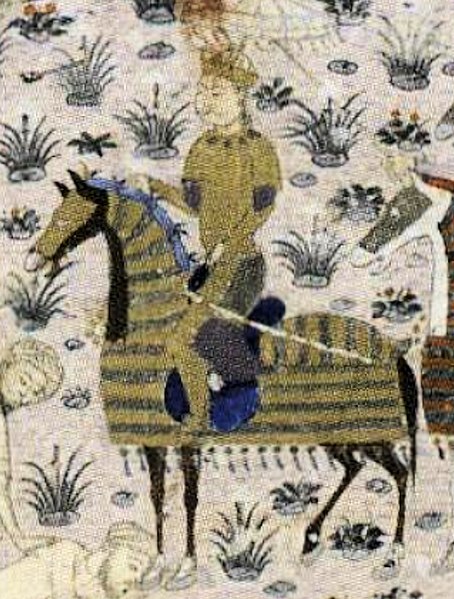The Lodi dynasty was a dynasty that ruled the Delhi Sultanate from 1451 to 1526. It was the fifth and final dynasty of the Delhi Sultanate, and was founded by Bahlul Khan Lodi when he replaced the Sayyid dynasty.
The Tomb of Sikandar Lodi.
Coinage of Mahmud Shah II (1510-1531 CE) of the Malwa Sultanate, in the name of Ibrahim Lodi, Sultan of Dehli, dated 1520-1 CE.
The Battle of Panipat against Babur, and the death of Sultan Ibrāhīm.
The Bara Gumbad in Lodhi Gardens in Delhi, India. Built in 1490 CE, probably by Sikandar Lodhi, it is believed to have the earliest constructed full dome of any building in Delhi.
The Delhi Sultanate or the Sultanate of Delhi was a late medieval empire primarily based in Delhi that stretched over large parts of the Indian subcontinent, for 320 years (1206–1526). Following the invasion of South Asia by the Ghurid dynasty, five dynasties ruled over the Delhi Sultanate sequentially: the Mamluk dynasty (1206–1290), the Khalji dynasty (1290–1320), the Tughlaq dynasty (1320–1414), the Sayyid dynasty (1414–1451), and the Lodi dynasty (1451–1526). It covered large swaths of territory in modern-day India, Pakistan, and Bangladesh as well as some parts of southern Nepal.
Tomb of Iltutmish (r. 1211–1236) in the Qutub Minar complex.
The Khaljis captured Jaisalmer Fort in Jaisalmer, Rajputana, in 1299.
The Alai Darwaza, completed in 1311 during the Khalji dynasty.
Depiction of Ghiyath al-Din Tughluq, founder of the Tughlaq dynasty, in the Basātin al-uns by Ikhtisān-i Dabir, a member of the Tughluq court and an ambassador to Iran. Ca.1410 Jalayirid copy of 1326 lost original.








